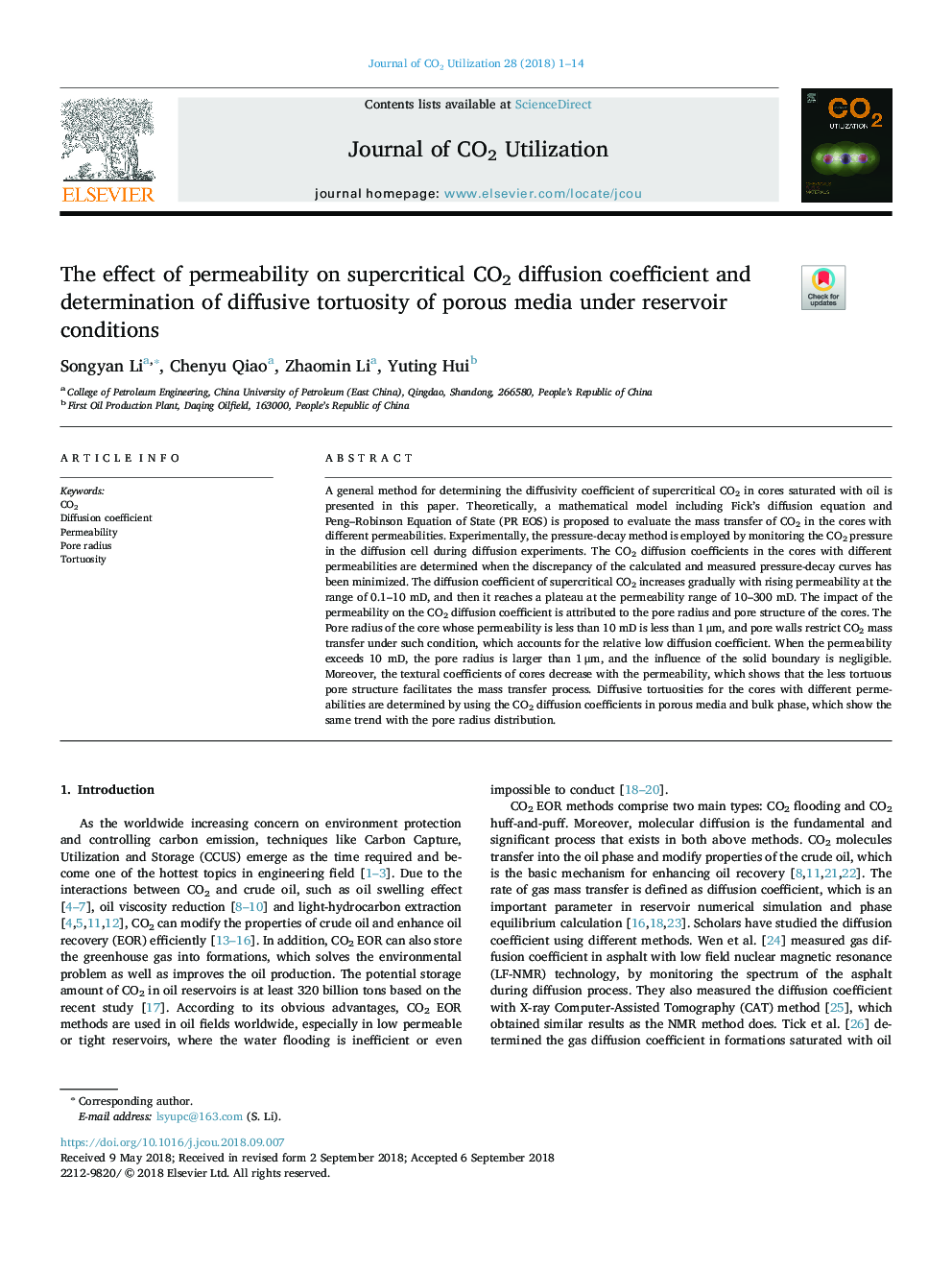| Article ID | Journal | Published Year | Pages | File Type |
|---|---|---|---|---|
| 10224918 | Journal of CO2 Utilization | 2018 | 14 Pages |
Abstract
A general method for determining the diffusivity coefficient of supercritical CO2 in cores saturated with oil is presented in this paper. Theoretically, a mathematical model including Fick's diffusion equation and Peng-Robinson Equation of State (PR EOS) is proposed to evaluate the mass transfer of CO2 in the cores with different permeabilities. Experimentally, the pressure-decay method is employed by monitoring the CO2 pressure in the diffusion cell during diffusion experiments. The CO2 diffusion coefficients in the cores with different permeabilities are determined when the discrepancy of the calculated and measured pressure-decay curves has been minimized. The diffusion coefficient of supercritical CO2 increases gradually with rising permeability at the range of 0.1-10 mD, and then it reaches a plateau at the permeability range of 10-300 mD. The impact of the permeability on the CO2 diffusion coefficient is attributed to the pore radius and pore structure of the cores. The Pore radius of the core whose permeability is less than 10 mD is less than 1âμm, and pore walls restrict CO2 mass transfer under such condition, which accounts for the relative low diffusion coefficient. When the permeability exceeds 10 mD, the pore radius is larger than 1âμm, and the influence of the solid boundary is negligible. Moreover, the textural coefficients of cores decrease with the permeability, which shows that the less tortuous pore structure facilitates the mass transfer process. Diffusive tortuosities for the cores with different permeabilities are determined by using the CO2 diffusion coefficients in porous media and bulk phase, which show the same trend with the pore radius distribution.
Related Topics
Physical Sciences and Engineering
Chemical Engineering
Catalysis
Authors
Songyan Li, Chenyu Qiao, Zhaomin Li, Yuting Hui,
